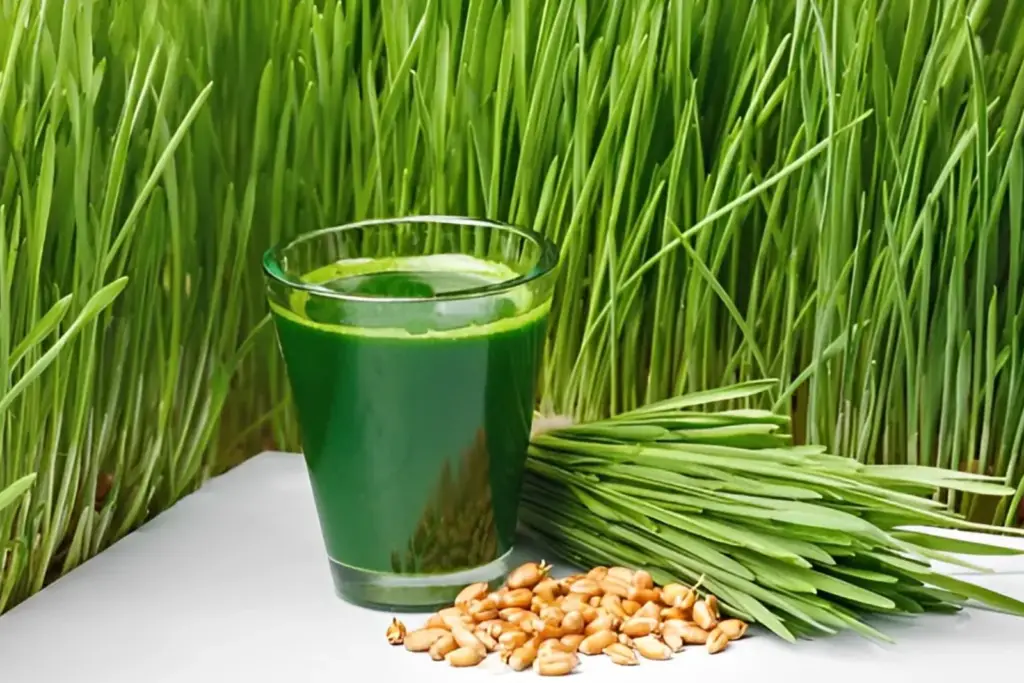
Celery juice has gained immense popularity in recent years for its potential health benefits. Packed with vitamins, minerals, and antioxidants, this vibrant green elixir is known for its refreshing and slightly tangy taste. Whether you’re a fan of daily celery juice shots or simply want to make the most of a surplus of celery, freezing celery juice is an excellent way to preserve its goodness for future use. In this article, we’ll walk you through a step-by-step guide on how to properly freeze celery juice while maintaining its nutritional value and flavor.
Here’s a comprehensive guide on how to freeze celery juice:
Step 1: Select fresh celery stalks
Selecting fresh celery stalks is the crucial first step in ensuring that your frozen celery juice maintains its nutritional value and flavor. The quality of the celery stalks you choose will directly impact the quality of the juice you produce and freeze. Here’s why this step is so important:
- Nutritional Value: Fresh celery stalks are rich in vitamins, minerals, and antioxidants, including vitamin K, vitamin C, potassium, and folate. By selecting fresh stalks, you maximize the chances of preserving these essential nutrients in your celery juice. Aging or wilted celery may have lower nutritional content and could result in a less nutritious juice.
- Flavor Profile: The taste of celery juice is characterized by its refreshing and slightly tangy flavor. Fresh celery stalks provide a vibrant and crisp taste that is both enjoyable and invigorating. Choosing stalks that are firm and vibrant green ensures that your celery juice maintains this delightful flavor profile.
- Aesthetic Appeal: Fresh celery stalks are visually appealing with their vibrant green color and crisp texture. When you use fresh celery, your celery juice will have a pleasing, appetizing appearance that can be more inviting to consume.
- Longer Shelf Life: Starting with fresh celery stalks gives your celery juice a longer shelf life when frozen. Fresh produce contains fewer microorganisms that can cause spoilage, making it easier to store for an extended period in the freezer without compromising its quality.
To identify fresh celery stalks for juicing, look for the following characteristics:
- Vibrant Green Color: The stalks should have a rich green color without any signs of browning or discoloration.
- Firmness: Gently squeeze the stalks to ensure they are firm to the touch. Fresh celery should not feel soft or rubbery.
- Absence of Wilt: Check that there are no signs of wilting or limpness in the celery stalks. Fresh celery should stand tall and crisp.
- No Visible Damage: Inspect the stalks for any bruising, cuts, or other physical damage. Fresh celery should be free from such imperfections.
Step 2: Wash and prep the celery stalks
After selecting fresh celery stalks, the next critical step in freezing celery juice is to wash and prepare the stalks properly. This step ensures the cleanliness, safety, and ease of juicing. Here’s why it’s essential and how to do it:
- Remove Dirt and Debris: Celery, like many other vegetables, can accumulate dirt, pesticides, or debris on its surface. Washing celery under cold running water helps eliminate these contaminants. This step is particularly important if you’re using conventionally grown celery, which may have pesticide residues. Washing it thoroughly under running water helps ensure that you’re consuming a cleaner and safer product.
- Food Safety: Properly washing celery reduces the risk of foodborne illnesses by removing potential pathogens or bacteria present on the surface. This is especially crucial when making juice, as bacteria can multiply rapidly in a liquid environment.
- Trim the Ends: Trimming the ends of the celery stalks is essential to remove any parts that might be dry, discolored, or tough. The root end, in particular, can be fibrous and less flavorful, so cutting it off ensures that you’re using the most desirable parts of the celery for juicing.
- Cut into Manageable Pieces: Cutting the celery stalks into smaller, manageable pieces makes them easier to feed into your juicer. It can also help prevent clogging or overloading the juicer, ensuring a smoother and more efficient juicing process.
To wash and prep celery stalks:
- Start by holding the celery stalks under cold running water, using your hands or a vegetable brush to gently scrub the surface and remove any dirt or debris.
- Trim off both ends of the celery stalks using a clean knife and cutting board. The root end and any dry or discolored parts should be removed.
- Depending on the size of your juicer’s feed chute, cut the celery stalks into manageable lengths, usually a few inches long. This will facilitate the juicing process and help you extract the juice more efficiently.
Step 3: Extract the celery juice
Once you’ve washed and prepared your celery stalks, the next step in freezing celery juice is to extract the juice itself. This is where the magic happens, transforming those fresh stalks into a flavorful, nutritious liquid. Here’s why this step is crucial and how to do it effectively:
- Utilizing a High-Quality Juicer: The choice of juicer matters significantly in the juice extraction process. A high-quality juicer can efficiently extract the maximum amount of juice from the celery while minimizing waste. Centrifugal and masticating juicers are popular options for celery juice extraction. Their design allows for better yield and nutrient retention compared to manual juicing or lower-quality juicers.
- Cleanliness and Sanitation: Ensuring that your juicer is clean and properly sanitized is paramount. Any residue or contaminants on the juicer’s components can affect the purity and safety of your celery juice. Thoroughly clean and sanitize all parts of the juicer, including the feed chute, blades, and collection container, before use.
- Flavor Enhancement: While celery juice has a distinctive and refreshing taste on its own, some people like to enhance its flavor by adding a splash of lemon juice. Lemon juice not only imparts a pleasant citrusy note but also helps preserve the vibrant green color of the celery juice. The acid in lemon juice can act as an antioxidant, potentially delaying oxidation and browning.
To extract celery juice effectively:
- Assemble your juicer according to the manufacturer’s instructions, ensuring that it’s clean and sanitized.
- Start by feeding the prepared celery stalks through the juicer, following the machine’s recommended process. The juicer will separate the juice from the fiber, collecting the liquid in one container and the pulp in another.
- If desired, add a splash of fresh lemon juice to the celery juice while it’s being extracted. This step is optional but can enhance the flavor and visual appeal of the juice.
- Continue juicing until all the celery stalks have been processed, and you’ve collected the desired amount of juice.
Should I add lemon juice to celery juice before freezing?
Adding lemon juice to celery juice before freezing is optional. Lemon juice can enhance flavor and help preserve the vibrant green color of the celery juice. However, the amount of lemon juice should be used sparingly to avoid overwhelming the natural celery flavor. The decision to add lemon juice depends on personal preference for taste and color preservation.
Can I add other ingredients like herbs or spices to celery juice before freezing?
Yes, you can add herbs or spices to celery juice before freezing to infuse unique flavors. However, it’s crucial to exercise caution with the quantity of herbs or spices added, as their intensity may change during freezing and may become overpowering upon thawing. Experimenting with small quantities and taste testing before freezing is advisable to achieve the desired flavor balance.
Step 4: Strain the juice (optional)
After extracting the celery juice, you have the option to further refine it by straining. This step involves passing the freshly extracted juice through a fine-mesh sieve or cheesecloth to remove any remaining pulp or solids. Whether or not to strain your celery juice is a matter of personal preference, and it depends on the texture and fiber content you desire in your juice. Here’s why this step is optional and how it can affect your celery juice:
- Pulp-Free Consistency: Straining celery juice results in a smoother and pulp-free consistency. The fine-mesh sieve or cheesecloth catches any remaining bits of fiber, producing a clear, liquid juice. This can be particularly appealing if you prefer a silky-smooth texture and a visually clear juice.
- Fiber Retention: On the other hand, some people prefer to retain the fiber and pulp in their celery juice. The fiber provides added texture and can make the juice feel more filling. Additionally, the fiber in celery contains valuable nutrients and may offer digestive benefits. If you enjoy the added texture and nutrition from the pulp, you can skip the straining step.
- Personal Preference: The decision to strain or not depends on your personal taste and dietary preferences. Some individuals may find that a pulp-free celery juice is easier to drink, while others appreciate the added fiber and texture for a more satisfying experience.
To strain celery juice (if desired):
- Place a fine-mesh sieve or a piece of clean cheesecloth over a bowl or pitcher.
- Pour the freshly extracted celery juice through the sieve or cheesecloth. Allow gravity to do the work, and use a spoon to gently press the pulp if necessary to extract the last bit of liquid.
- Discard the collected pulp or use it in cooking or composting if you prefer not to waste it.
- Transfer the strained celery juice to a clean container for the next steps in the freezing process.
Remember that straining is entirely optional, and whether you strain your celery juice or not is based on your personal preference. Both options are valid, and the nutritional value of the celery juice remains relatively consistent, with the primary difference being the texture and presence of pulp.
Step 5: Portion the celery juice
Now that you’ve successfully extracted and optionally strained your celery juice, it’s time to prepare it for freezing. Properly portioning the juice ensures that you can conveniently access the right amount when you need it without having to thaw the entire batch. Here’s why this step is crucial and how to go about it:
- Convenience and Accessibility: Portioning celery juice into smaller servings makes it more convenient for future use. You won’t need to thaw and refreeze large quantities every time you want a glass of celery juice. This approach allows you to use only what you need, reducing waste.
- Versatility: Smaller portions of frozen celery juice can be used in various ways. Whether you want a small shot of celery juice or need it as an ingredient in a smoothie or recipe, having it pre-portioned makes it versatile for different culinary purposes.
- Expansion Consideration: When liquids freeze, they expand, and celery juice is no exception. To avoid the risk of containers bursting or leaking, it’s essential to leave some space at the top of each container or ice cube tray compartment. This space accommodates the expansion and prevents damage to the containers.
To portion celery juice for freezing:
- Decide on the desired portion sizes. Common options include ice cube-sized portions, silicone molds with defined shapes, or small airtight containers.
- If you’re using ice cube trays or silicone molds, carefully pour the celery juice into each compartment, filling them to your desired level. Leave about 1/4 inch (6 mm) of space at the top to allow for expansion during freezing.
- If using small airtight containers, fill each container with the desired amount of celery juice, again leaving some space at the top. Seal the containers tightly to prevent freezer burn.
- Repeat the process until you’ve portioned all the celery juice according to your needs.
- Label the containers or trays if necessary, indicating the date of freezing for easy tracking of freshness.
Can I freeze celery juice in glass containers?
Yes, you can freeze celery juice in glass containers, but there are precautions to consider. Use freezer-safe glass containers designed to withstand temperature changes. Leave some space at the top to accommodate expansion during freezing, as liquids expand when frozen. Avoid placing hot glass containers in the freezer, as sudden temperature changes can cause glass breakage.
Step 6: Freeze the celery juice
After successfully portioning your celery juice, the next crucial step is to freeze it promptly. Proper freezing is vital for preserving the quality, flavor, and nutrients of your celery juice for an extended period. Here’s why this step is essential and how to do it correctly:
- Preservation of Quality: Freezing celery juice at the right temperature ensures that it maintains its freshness and nutritional value. The low temperature inhibits the growth of microorganisms and slows down enzymatic reactions that can degrade the juice.
- Prevention of Ice Crystal Formation: Flash-freezing the juice helps prevent the formation of large ice crystals, which can negatively impact the texture and flavor of the juice. Smaller ice crystals are less likely to disrupt the cellular structure of the juice, preserving its integrity.
- Fast and Efficient Freezing: Flash-freezing involves quickly lowering the temperature of the juice, typically by placing it in a freezer set to its coldest setting. This rapid freezing process minimizes the time the juice spends at temperatures where degradation can occur.
To freeze celery juice effectively:
- Place the portioned celery juice containers or ice cube trays in the freezer.
- Ensure that your freezer is set to its coldest setting, typically around -18°C (0°F) or lower. If you have access to a blast freezer, which rapidly freezes items at extremely low temperatures, it can be especially effective for this purpose.
- Leave adequate space between containers or trays to allow for proper air circulation and even freezing. Avoid overcrowding the freezer, as this can slow down the freezing process.
- Keep the freezer door closed during the initial freezing to maintain a consistent low temperature. Opening the freezer frequently can lead to temperature fluctuations, which may affect the quality of the frozen celery juice.
- Allow the celery juice to freeze completely. This may take several hours, depending on the size of your portions and the efficiency of your freezer.
Step 7: Remove and store
After your celery juice portions have been properly flash-frozen, it’s time to remove them from their initial freezing containers and transfer them to long-term storage. Proper storage is essential for maintaining the quality and taste of your frozen celery juice over an extended period. Here’s why this step is important and how to do it effectively:
- Preventing Freezer Burn: Freezer burn occurs when air comes into contact with frozen food, leading to moisture loss and the formation of ice crystals on the surface. This can affect the texture and flavor of your celery juice. Transferring the portions into airtight containers or bags helps create a barrier against air, reducing the risk of freezer burn.
- Maintaining Quality: Once the celery juice portions are removed from their initial freezing containers, they can be stacked or stored more compactly, optimizing your freezer space. This efficient storage method ensures that your juice remains in a controlled environment, preserving its quality.
- Easy Access: Storing celery juice in airtight containers or bags also makes it more convenient to access individual portions when needed. You won’t have to thaw the entire batch if you only want a small amount, making it a practical choice for daily consumption.
To remove and store frozen celery juice:
- Remove the frozen celery juice portions from their initial freezing containers or trays. If you use ice cube trays or silicone molds, gently pop out the individual portions. If you use small airtight containers, take them out of the freezer.
- Prepare airtight freezer bags or containers for storage. These should be clean, dry, and specifically designed for freezer use to prevent the absorption of odors.
- Place the frozen celery juice portions into the airtight bags or containers. Ensure that they are packed tightly but not overcrowded.
- Remove as much air as possible from the bags or containers before sealing them. You can use a vacuum sealer for this purpose, or manually press out the air while sealing the bag or container.
- Seal the bags or containers securely to create an airtight seal. Label them with the date of freezing for easy tracking of freshness.
- Return the sealed bags or containers to the freezer promptly.
Step 8: Label and date
Labeling and dating your frozen celery juice containers is a simple yet crucial step in ensuring that you can keep track of the freshness of your juice and use it in a timely manner. Here’s why this step is important and how it helps maintain the quality of your frozen celery juice:
- Freshness Tracking: Labeling your containers with the date of freezing allows you to monitor how long the celery juice has been stored in the freezer. Over time, frozen foods can experience changes in flavor and texture, so it’s essential to know when they were frozen to use them before any noticeable quality decline.
- First-In, First-Out (FIFO): Labeling with the date follows the FIFO principle, which means using the oldest items first. By clearly marking the date of freezing, you ensure that you consume your celery juice in the order it was prepared, minimizing the risk of any portions becoming forgotten or overlooked.
- Quality Assurance: Frozen celery juice is at its best when consumed within a reasonable timeframe. By knowing the date of freezing, you can gauge the freshness of the juice and make sure you enjoy it while it’s still at its peak quality.
To label and date your frozen celery juice containers:
- Use a waterproof marker or label specifically designed for freezer use.
- Write the date of freezing on each container or bag. Include the day, month, and year.
- Make the label clear and legible to ensure easy identification.
- If you’re using bags, you can also write directly on the bag itself. If you prefer using containers, attach a label to the container’s exterior.
- When adding new portions to the freezer, be sure to label and date them as well, maintaining the FIFO order.
Step 9: Store in the Freezer
After properly labeling and dating your celery juice packages, the final step in freezing celery juice is to store them in the freezer. Correct storage is essential for maintaining the quality and safety of your juice for an extended period. Here’s why this step is crucial and how to ensure that your frozen celery juice remains in excellent condition:
- Maintaining Quality: Storing your celery juice in the freezer’s coldest part helps maintain its freshness and preserves its flavor, texture, and nutritional value. The low temperature prevents the growth of microorganisms and slows down enzymatic reactions that can degrade the juice.
- Extended Shelf Life: When stored correctly, frozen celery juice can maintain its quality for up to six months or longer. By taking steps to protect it from air and moisture, you can ensure that it remains suitable for consumption over an extended period, even when fresh celery is out of season.
- Organized Storage: Properly storing your frozen celery juice in the coldest part of the freezer allows you to keep it organized and readily accessible. You can easily locate and retrieve individual portions without disturbing the rest of the freezer contents.
To store celery juice in the freezer effectively:
- Open the freezer and identify the coldest part. This area is typically near the back of the freezer, away from the door, where the temperature remains the most consistent.
- Place your labeled and dated celery juice packages in this coldest part of the freezer. Ensure that the containers or bags are securely sealed to prevent air and moisture infiltration.
- Organize the packages neatly, making sure they are stacked or arranged in a way that allows for easy access to each portion.
- Avoid overcrowding the freezer, as good air circulation helps maintain a consistent temperature. Overcrowding can lead to temperature fluctuations, which may affect the quality of your frozen celery juice.
- Be mindful not to place hot or warm containers in the freezer, as this can raise the temperature in the freezer and potentially compromise the quality of surrounding frozen items.
Is it safe to use celery juice that has been frozen for longer than six months?
While it may still be safe to consume celery juice frozen for longer than six months if properly stored, its quality and taste may degrade over time. It’s advisable to use it within the recommended storage period for the best experience.
Other related questions
How do I defrost celery juice?
To defrost celery juice, simply transfer the frozen portion from the freezer to the refrigerator. Allow it to thaw slowly overnight or for several hours. Once completely thawed, give it a gentle stir or shake to recombine any separated components, and it’s ready for consumption.
What’s the best way to thaw frozen celery juice quickly if I want to drink it right away?
To thaw frozen celery juice quickly for immediate consumption, place the frozen portion in a bowl of lukewarm water, ensuring it is sealed in an airtight bag or container to prevent water contact. Alternatively, you can use a microwave at a low setting, stirring periodically until it reaches your desired consistency. These methods expedite the thawing process, allowing you to enjoy your celery juice promptly.
Can I refreeze celery juice?
Refreezing celery juice is generally not recommended as it can lead to changes in texture and flavor due to the formation of ice crystals during the thawing and refreezing process. It may also impact the juice’s nutritional integrity. It is advisable to only thaw the amount of celery juice needed to minimize the need for refreezing.
How do I know if the celery juice has gone bad after being frozen?
Frozen celery juice may spoil if it develops off-putting characteristics such as an unusual odor, off-color, or an altered taste upon thawing. Visual inspection and smelling the juice can help determine if it has gone bad. If there are any signs of spoilage, it’s advisable to discard the celery juice to ensure food safety.
Can I freeze celery juice with other ingredients, like fruits or vegetables, for smoothies?
Yes, you can freeze celery juice with other ingredients for smoothies. Combining celery juice with fruits or vegetables allows you to create flavorful and nutritious frozen smoothie packs. To do so, blend your desired ingredients together, portion them into containers or ice cube trays, and then freeze. This method provides convenient access to pre-made smoothie components for quick and easy blending.
Is there a difference in taste or texture between fresh and frozen celery juice?
While there may be a slight difference in texture and flavor between fresh and frozen celery juice, properly frozen juice can maintain much of its original quality and taste, making it a convenient way to enjoy celery juice year-round.








